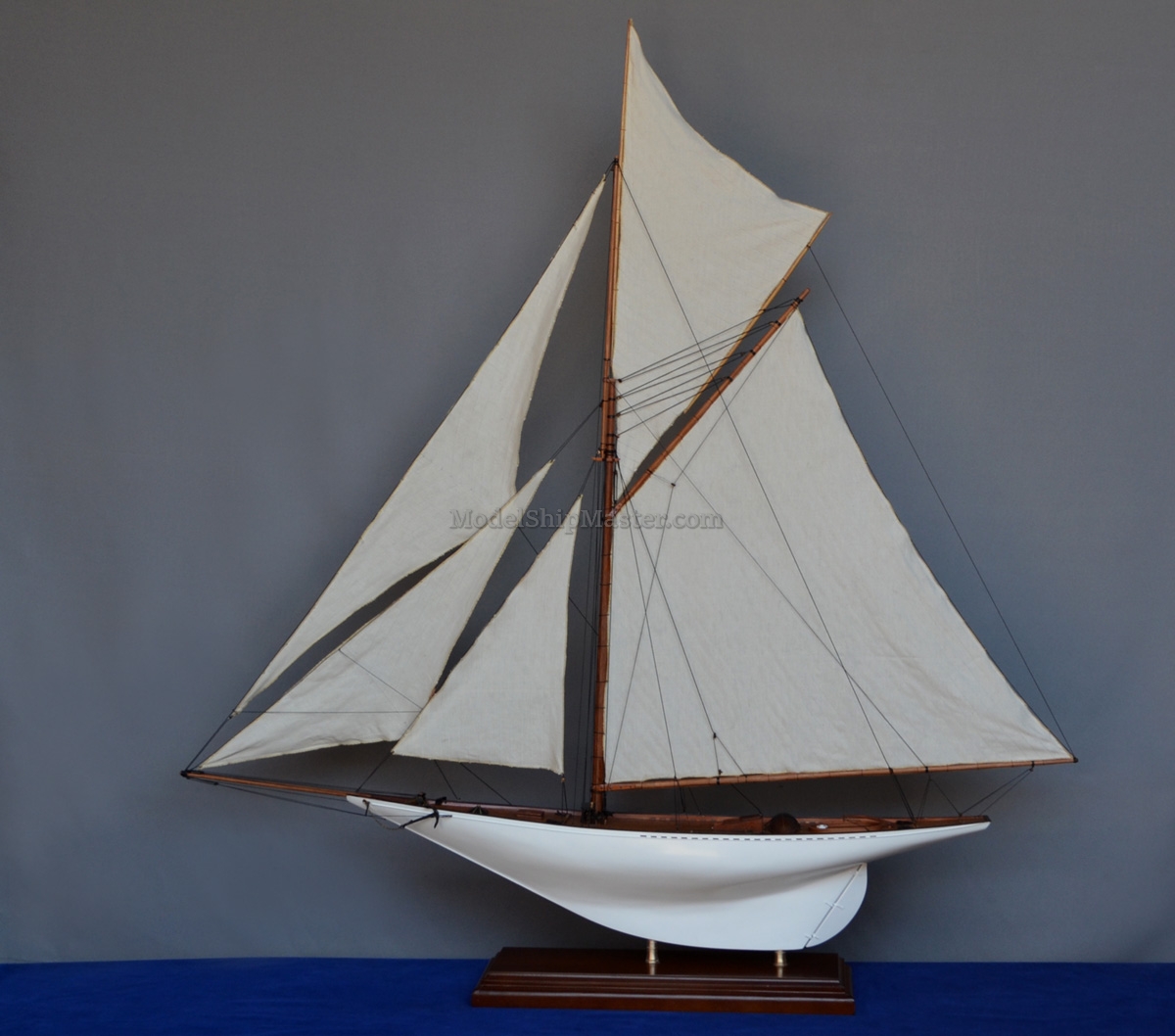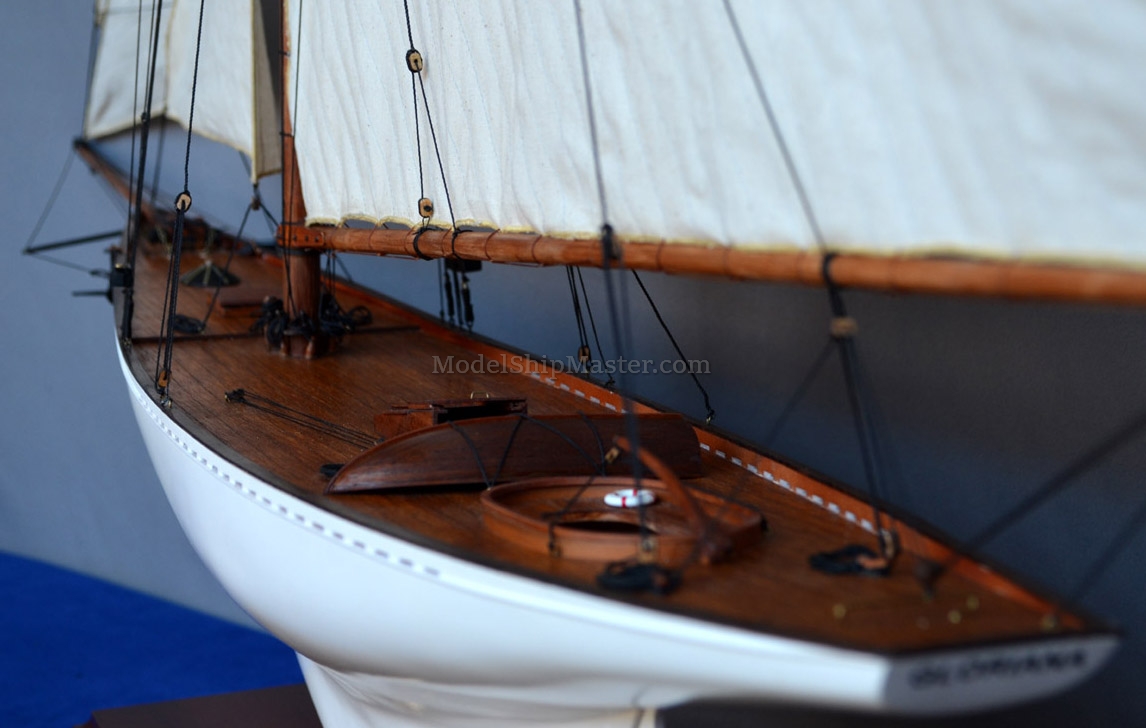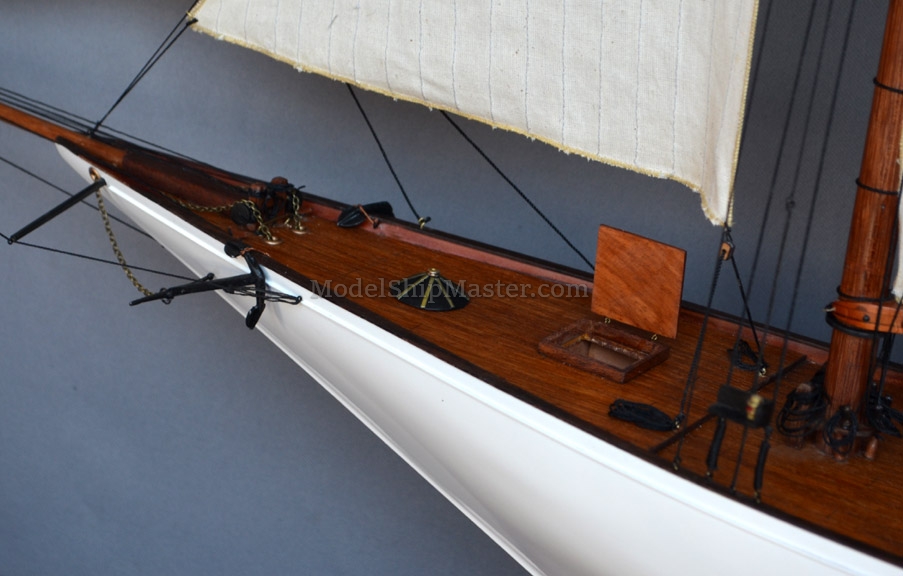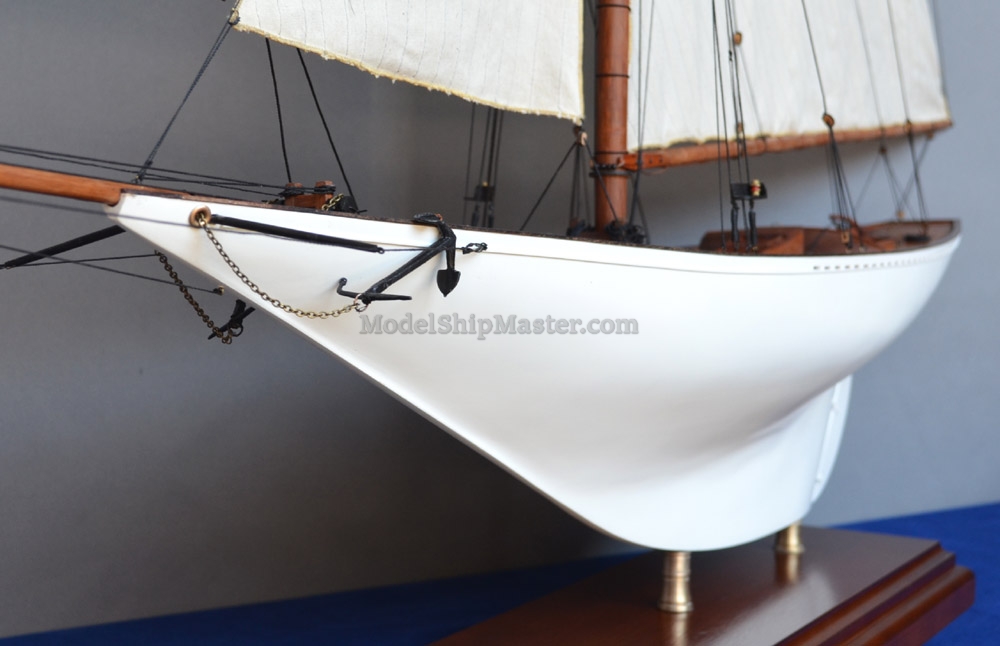|


256-bit encryption
$500,000 protection

|
GLORIANA Sloop
The boat that revolutionized the sailboat
racing sport

>The
Herreshoff Manufacturing Company is now synonymous with
revolutionary sailboats, but that reputation was born
with hull #411 in 1891 – the great Gloriana. The
hull number would suggest that HMCo had built 411
sailboats, but actually, when the first sailing vessel
was entered into the Construction Record in 1883, they
had already built 100 steam-powered boats; so they made
the decision to start the sailing boats with #400. So, in 1891, Gloriana was only the eleventh – and by far
the largest – sailboat built since the company began in
1878 (and four of those eleven were built for the
Herreshoff family.)
By the
1880s, yacht racing was a huge sport, and the rules
had evolved to actually measure the speed-giving
attributes of sail area and waterline length, as
they understood them at the time. The Seawanhaka Corinthian Yacht Club adopted the
following rule in 1882, and it was soon adopted by
most American yacht clubs

Gloriana
was ordered by E.D. Morgan to compete in a 46-foot (waterline)
class against eight other new boats by leading
designers. The
formula is the square root of the sail added to the
waterline length, divided by two, equals the racing
length. More than any other, the man who showed
how this logical rule could be exploited was our hero:
Nathanael G. Herreshoff. In Gloriana, the waterline length was
only 45′ 3” with an overall length of over 70′. Not only did she have long overhangs, though, for
maximum length on a given resting waterline, she had
very full, spoon-like ends. As important or more
so than her shape, she was built very light with wooden
deck and planking over steel beams and frames (what Herreshoff called “composite construction”), allowing a
higher percentage of her 39 tons of displacement to be
in her deep lead bulb keel.
Gloriana's
design was
profoundly effective: in her first season, she won every race –
immediately giving Nat Herreshoff and the HMCo the
reputation of being the most modern American sailing
yacht designer and builder, and showing all other
designers and builders the direction they must go to win
against the waterline/sail area rule. It should be
noted, however, that while Gloriana led the way from
wholesome cruising/racing yachts towards the dangerous,
uncomfortable, structurally deficient all-out racing
machines that would follow in the decade after her
launch – she was pretty, seaworthy, long-lived, and had
comfortable cruising accommodations.

This began
an arms race, creating boats with ever longer overhangs,
ever more sled-like hulls, ever smaller and deeper fins
with bulbs of lead for ballast – not every designer nor
ever manufacturer could equal the engineering of
Herreshoff to build boats as light as they can be, but
as strong as they must be. By 1900, many of the
boats that were most competitive under the Seawanhaka
waterline length and sail are rule were exaggerated
scows, with no accommodations, that couldn’t sail in
many conditions or make ocean passages, and were prone –
through structural deficiencies – to catastrophic
failure. In 1902, the New York Yacht Club decided
enough was enough – they put out a call for a new rating
rule to leading experts around the world. The rule they
chose to adopt, and which then was so widely adopted
that it became known as the Universal Rule, was written
by – you guessed it – Nathanael G. Herreshoff.

We build this
primarily wood
GLORIANA Sloop in two sizes:
24" long x 28"
tall and 30" long x 35" tall.
Model is built per commission only. We require only a
small deposit to start the process.
|